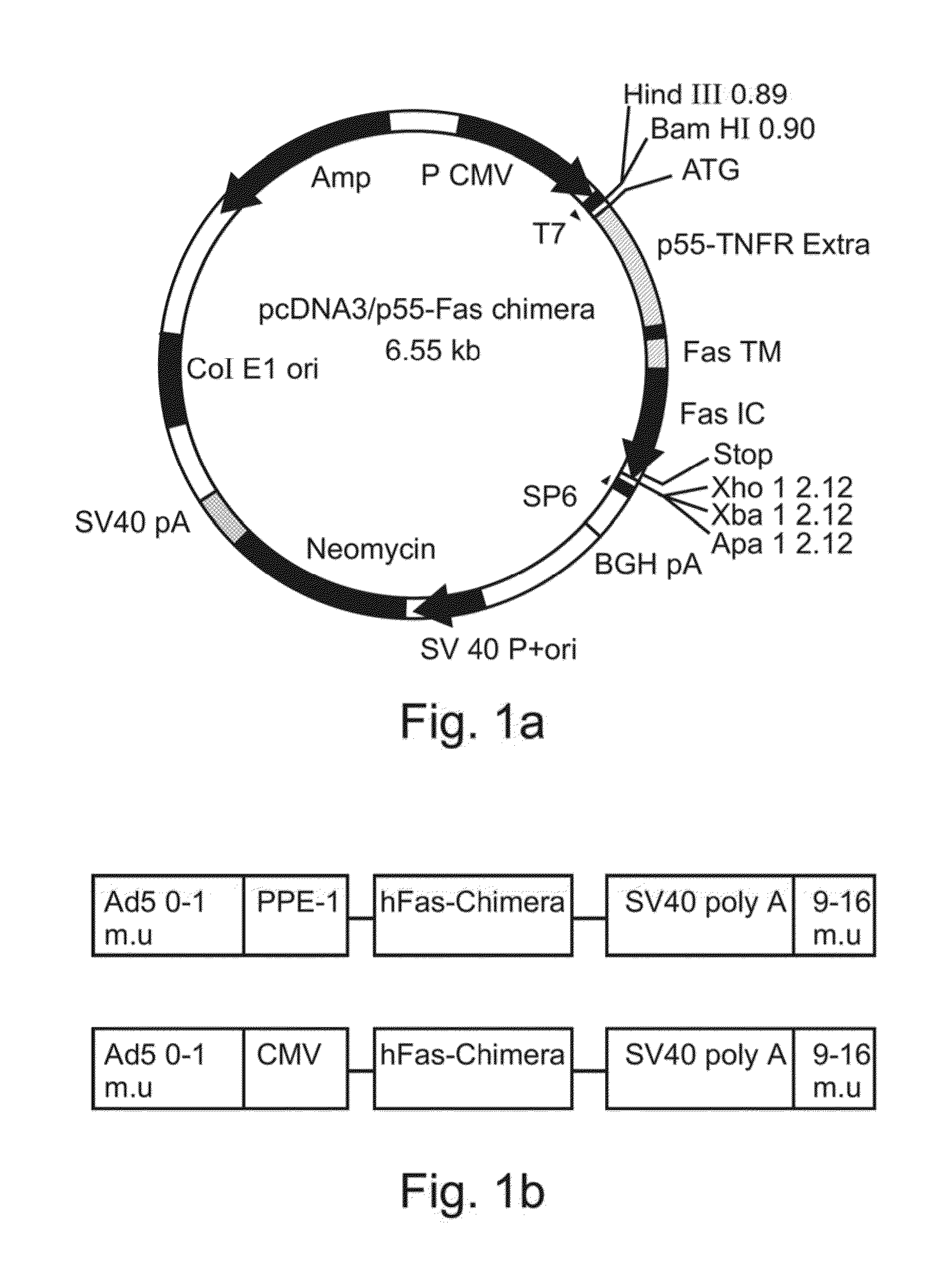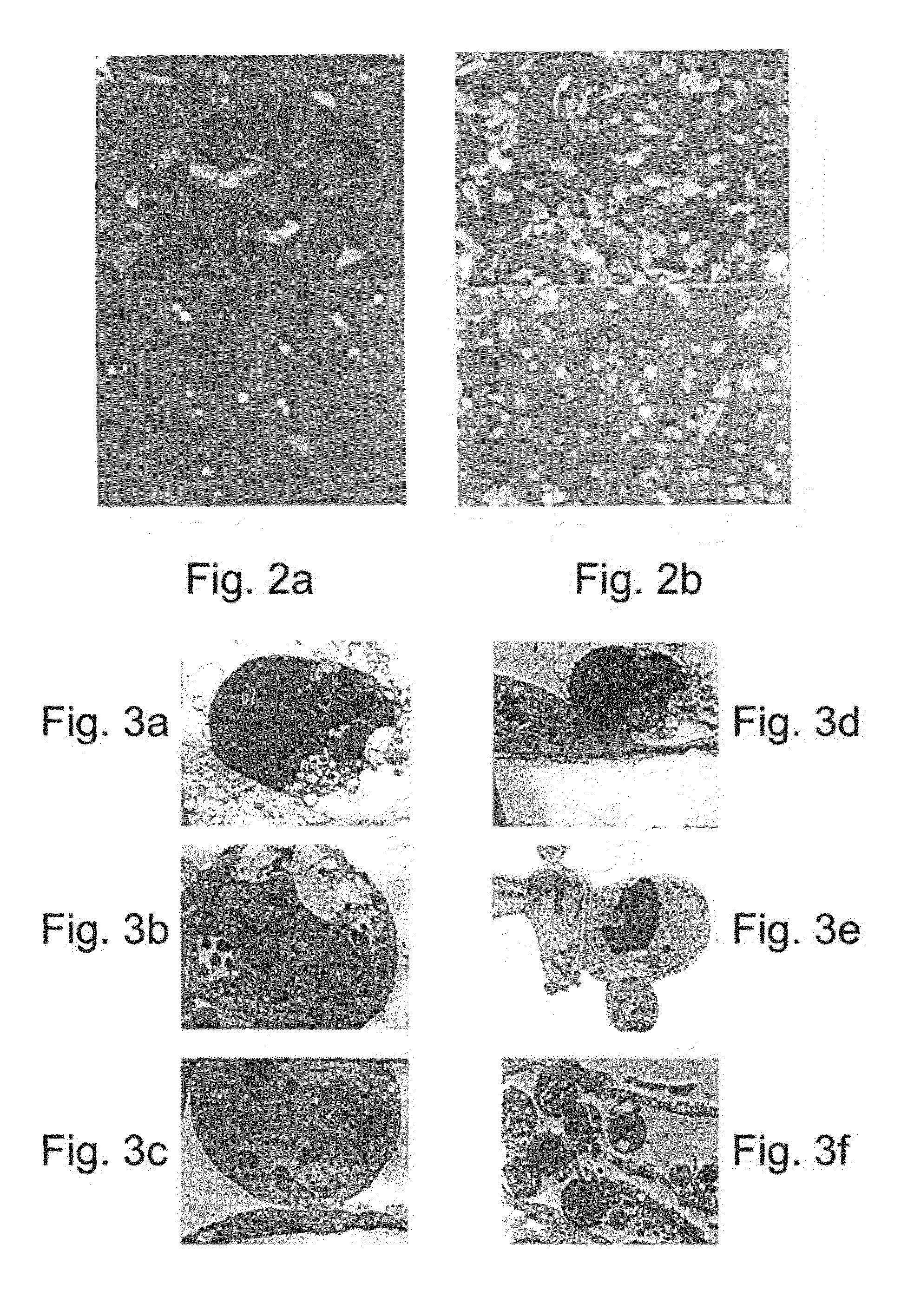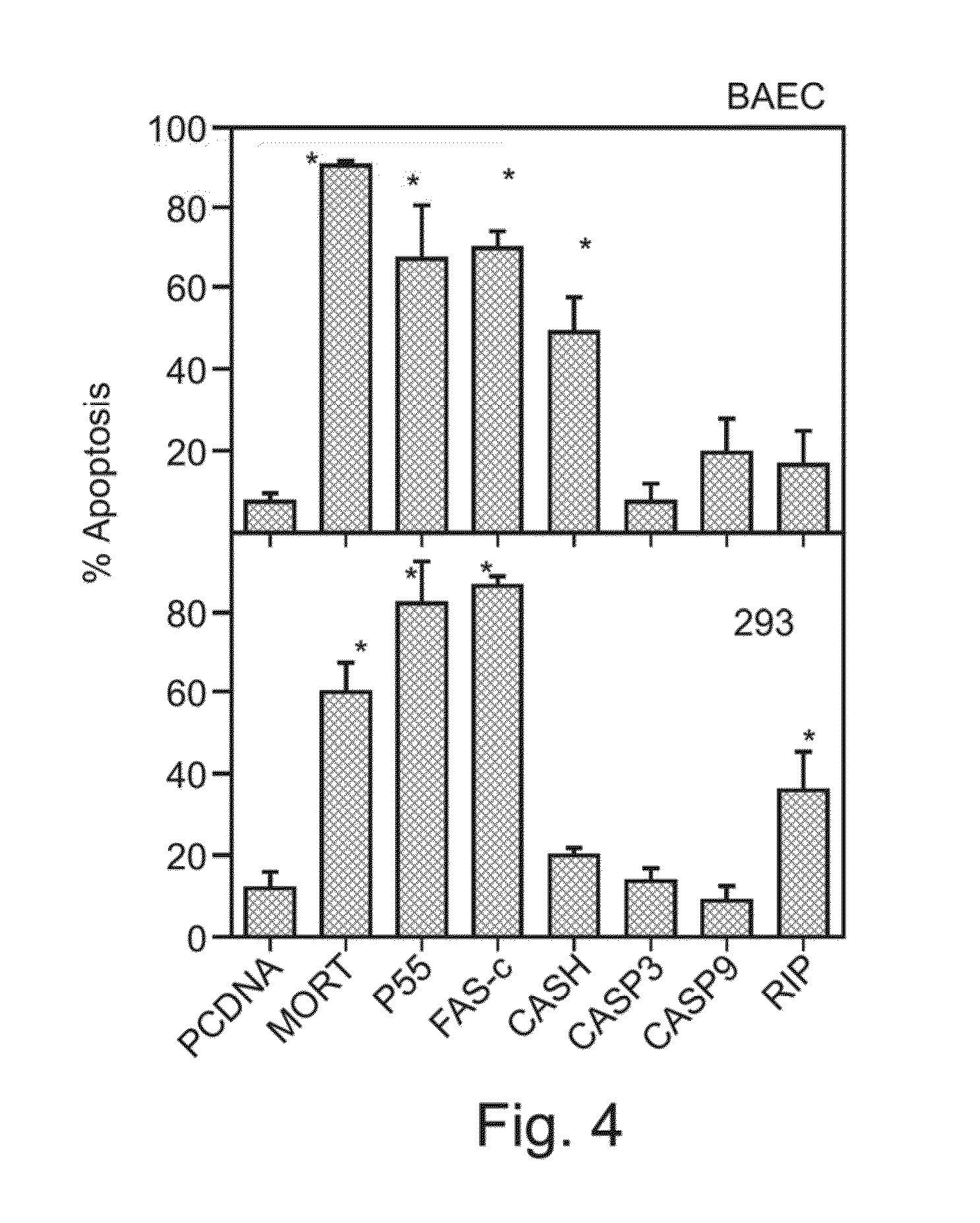Promoters exhibiting endothelial cell specificity and methods of using same for regulation of angiogenesis
a technology of endothelial cells and promoters, which is applied in the field of promoters exhibiting endothelial cell specificity and methods of using same for regulation of angiogenesis, can solve the problems of difficult to suppress therapeutically, limiting clinical use of such devices, and bleeding and blindness,
- Summary
- Abstract
- Description
- Claims
- Application Information
AI Technical Summary
Benefits of technology
Problems solved by technology
Method used
Image
Examples
example 1
In-Vitro Assay for Pro-Apoptotic Gene Activity in Endothelial Cells (BAEC) and 293 Cells
[0456]In cancer treatment, anti-angiogenic therapy targets the evolving vasculature which nourishes the growing tumor [Folkman J. N Engl J Med (1995) 333(26):1757-63]. As the research of apoptosis, or programmed cell death, has progressed, numerous genes that encode selective and efficient cell death regulators have been identified [Strasser et al. Annu Rev Biochem (2000) 69:217-45.].
[0457]The present study screened several pro-apoptotic genes in order to identify an agent most suitable for anti-angiogenic therapy. Several pro-apoptotic genes including MORT1 (FADD—Fas associated death domain protein, GenBank Accession number NM—003824), RIP (receptor-interacting-protein, GenBank Accession number U25995), CASH (c-FLIP, GenBank Accession number AF010127), MACH (caspase 8 GenBank Accession number X98172), CPP32 (caspase 3, GenBank Accession number U13737), caspase 9 (U60521) and Fas-chimera (Fas-c),...
example 2
Production of Recombinant adenoviruses Encoding Fas-Chimera Under the Control of the Modified PPE-1 Promoter (PPE-1(3x))
[0459]A cDNA encoding a full length Fas-chimera was subcloned into the plasmid pPACPPE1-3x containing the modified pre-proendothelin1 promoter (see FIG. 1b). Recombinant adenoviruses were produced by co-transfection of this plasmid with pJM17 plasmid into human embryonic kidney 293 cells. Successful viral cloning was verified via PCR amplification (FIG. 5a).
[0460]In order to determine the expression of Fas-c in the target cells, endothelial BAEC cells were transduced with the indicated titer of Ad-PPE-1(3x)-Fas-c. 72 h post transduction cells were lysed and cellular proteins resolved using a non-reducing SDS-PAGE gel. Western blot analysis was performed using anti-TNFR1 antibody (Sc-7895, Santa-Cruz Biotech). As demonstrated in FIG. 5b, a prominent band migrating at 45 kD was clearly evident and its expression was dose-dependent, suggesting correct folding and expr...
example 4
Co-Administration of Ad-PPE-1(3x)-Fas-c Receptor and TNFα Ligand Augments the Pro-Apoptotic Effect in a Selective Manner
[0465]The ability of TNFα to augment the apoptotic effect in Fas-c expressing cells was investigated. Human TNFα was added to an endothelial cell culture 48 h-post virus infection with Ad-PPE-Fas-c (MOI of 100). Cell viability was assayed 24 h later. As shown in FIG. 8, TNFα (10 ng / ml) induced a 73% decrease in viabilty of Ad-PPE-1(3x)-Fas-c infected cells, whereas no significant mortality was effected by TNFα alone or in cells infected with control virus (Ad-Luc).
[0466]To substantiate the effect of TNFα, cell specificity was addressed. NSF (normal skin fibroblasts), DA3 (mouse mammary adenocarcinoma), D122 (Lewis lung carcinoma) and B16 melanoma cells were infected with Ad-PPE-Fas-c or a control virus. 48 hours later, culture was supplemented with TNFα and cell morphology was assessed following staining with crystal violet. As shown in FIGS. 9a-e, non-endothelial ...
PUM
| Property | Measurement | Unit |
|---|---|---|
| thickness | aaaaa | aaaaa |
| concentrations | aaaaa | aaaaa |
| concentrations | aaaaa | aaaaa |
Abstract
Description
Claims
Application Information
 Login to View More
Login to View More - R&D
- Intellectual Property
- Life Sciences
- Materials
- Tech Scout
- Unparalleled Data Quality
- Higher Quality Content
- 60% Fewer Hallucinations
Browse by: Latest US Patents, China's latest patents, Technical Efficacy Thesaurus, Application Domain, Technology Topic, Popular Technical Reports.
© 2025 PatSnap. All rights reserved.Legal|Privacy policy|Modern Slavery Act Transparency Statement|Sitemap|About US| Contact US: help@patsnap.com



